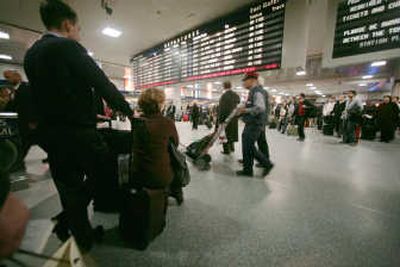Amtrak, unions reach deal

WASHINGTON – Amtrak said Friday it has reached a preliminary deal with nine labor unions, averting a potentially devastating strike at the end of January.
Details of the agreement will not be released until it is ratified by affected union members in coming weeks, according to a statement from Amtrak.
But people familiar with the agreement, speaking on condition of anonymity because the details have not been announced, said it adopts the recommendations of a presidential emergency board report issued Dec. 30. The board’s report, which recommended that Amtrak grant back wages to its workers, triggered a 30-day countdown until a strike became legal.
“We have averted a possible strike that could have had a crippling effect on the lives of millions of Americans,” Amtrak president and CEO Alex Kummant said in a statement.
Joel Parker, a spokesman for the Transportation Communications International Union and a lead negotiator, said the tentative contract includes back pay totaling more than three times what Amtrak was offering and none of the concessions on work rules that Amtrak had been seeking.
It includes wage increases that average 35.2 percent over the life of the agreement from January 2000 through Dec. 31, 2009 – or about 3.1 percent per year, according to a union official involved in the deal.
The labor dispute, which had continued despite years of unsuccessful mediation, involved about 10,000 employees whose last contract ended Dec. 31, 1999.
“I hope I never have to go through another eight years without an agreement,” said Dan Pickett, head of the Passenger Rail Labor Coalition. “We’ve got a real morale problem, and we have to show that we can work together with Amtrak from this point forward.”
Had Amtrak workers walked out for the first time in the railroad’s 36-year history, the 71,000 people who use the service every day would not have been the only ones impacted. Hundreds of thousands of people who ride commuter trains also would have suffered because many such services depend on Amtrak employees or infrastructure, particularly in the Northeast.